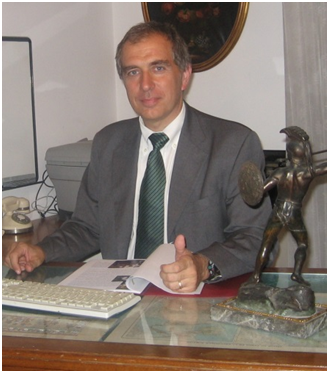7 Questions to Roberto Arditi, Chair of PIARC Technical Committee C.1
Marrakech (Morocco), 6 April 2017

Roberto Arditi
·Why did your Committee choose Morocco as a venue country for its Meeting and International Workshop on Road Safety?
As part of its statutory duties, the World Road Association manages the "PIARC Program of International Seminars" since 1999. It aims at strengthening its presence throughout the world, being more receptive to the needs of developing countries and countries with economies in transition, and making the results of the Association's work more widely known in those countries.
The PIARC event scheduled in Marrakech was the first PIARC workshop focused on discussing the Road Safety Manual (RSM). It benefited from the contribution of Moroccan experts and PIARC experts directly involved in the evolution of the RSM.
·How does Morocco contribute to that duty of PIARC?
Morocco is a key African middle-income country. It is a country which places road safety at the heart of its public policies and which is deploying a new national road safety strategy for 2016-2025. The latter sets ambitious targets: halving the number of road deaths by 2025 with an intermediate reduction goal of 25% over the next five years.
·Are you satisfied with the result of the workshop?
I was impressed by the contribution of local partners to the International Workshop on Policies and Programs for road safety. Their will to save lives on roads appeared tangible from the words of some Moroccan speakers. I was really satisfied to learn that Moroccan Authorities were able to stabilize the number of fatalities on the Kingdom's roads and that Morocco is planning further concrete steps in the near future. Morocco still has a great potential for further concrete improvements and the full PIARC Committee looks forward to further successes from Moroccan Road Authorities.
·Which items of your working program have been treated as focal points?
PIARC Technical Committee C.1 deals with Road Safety Policies and Programs. The goal of this PIARC team is to define those strategies and measures enabling road authorities and operators to promote the safety and efficiency of road transport, including the safe movement of both people and goods on the network. Promoting the knowledge available on all aspects of road safety and encouraging implementation of positive practices is clearly at the heart of PIARC activities.
·What methodology is being used and what are the expected results?
In terms of reference, PIARC Technical Committee C.1 is responsible for upgrading PIARC's Road Safety Manual as a comprehensive online resource which builds on the broad range of knowledge and experience provided by PIARC experts. Nevertheless, we are not the sole managers of the Road Safety Manual: in fact, we share this responsibility with PIARC Technical Committee C.2, which gathers PIARC experts in technical measures and human behavior in road safety. They are also strongly committed to our joint target of developing the Manual.
PIARC Technical Committee C.1 also addresses a second topic. We investigate the implementation of National Road policies and their evolution. For this purpose, a questionnaire is currently being developed to be finalized and approved by the next Committee meeting.
·How are you working on developing the Manual in line with the three working languages of the Association (English, French and Spanish)?
Today, our Manual is publicly available, but in English only. French and Spanish versions have already been provided thanks to the support of the World Bank. PIARC organized a full technical peer review of the two translations, and the Manual will soon be available in the three languages of the Association.
·Which will be the next steps for upgrading the Road Safety Manual?
These translations will strengthen the global accessibility of the Manual. In addition to that, consistent content upgrade is being developed: within the next months, the first versions of chapter updates of the Manual will be completed.
What's more, several case studies are being collected and validated to be uploaded onto the Manual website before the end of 2017
·How do you assess the progress of the Committee's working groups?
The Marrakech meeting of PIARC Technical Committee C.1 benefited from the great dynamism of our members and their common willingness to progress in line with the strategic plan of the Association.
The hard work that has been contributed by all stakeholders resulted in an extremely successful meeting: it certainly helps us deliver on the work plan for the 2016-2019 work cycle of the Association. It was developed through a joint effort from PIARC officers, Committee secretariat, working group leaders and Committee members.Both of our working groups are progressing; time tables for the next steps have been decided with clear indications of responsibilities and deadlines.
Our meeting in Morocco marked an interesting step in the life of our Committee, thanks to the opportunity offered to us by the Moroccan hosts. I think I am expressing the common thinking of all members when I state that our Technical Committee is indebted to our Moroccan hosts! We have a debt in terms of hospitality, friendship and - of course - for the opportunity to move forward with our duties.